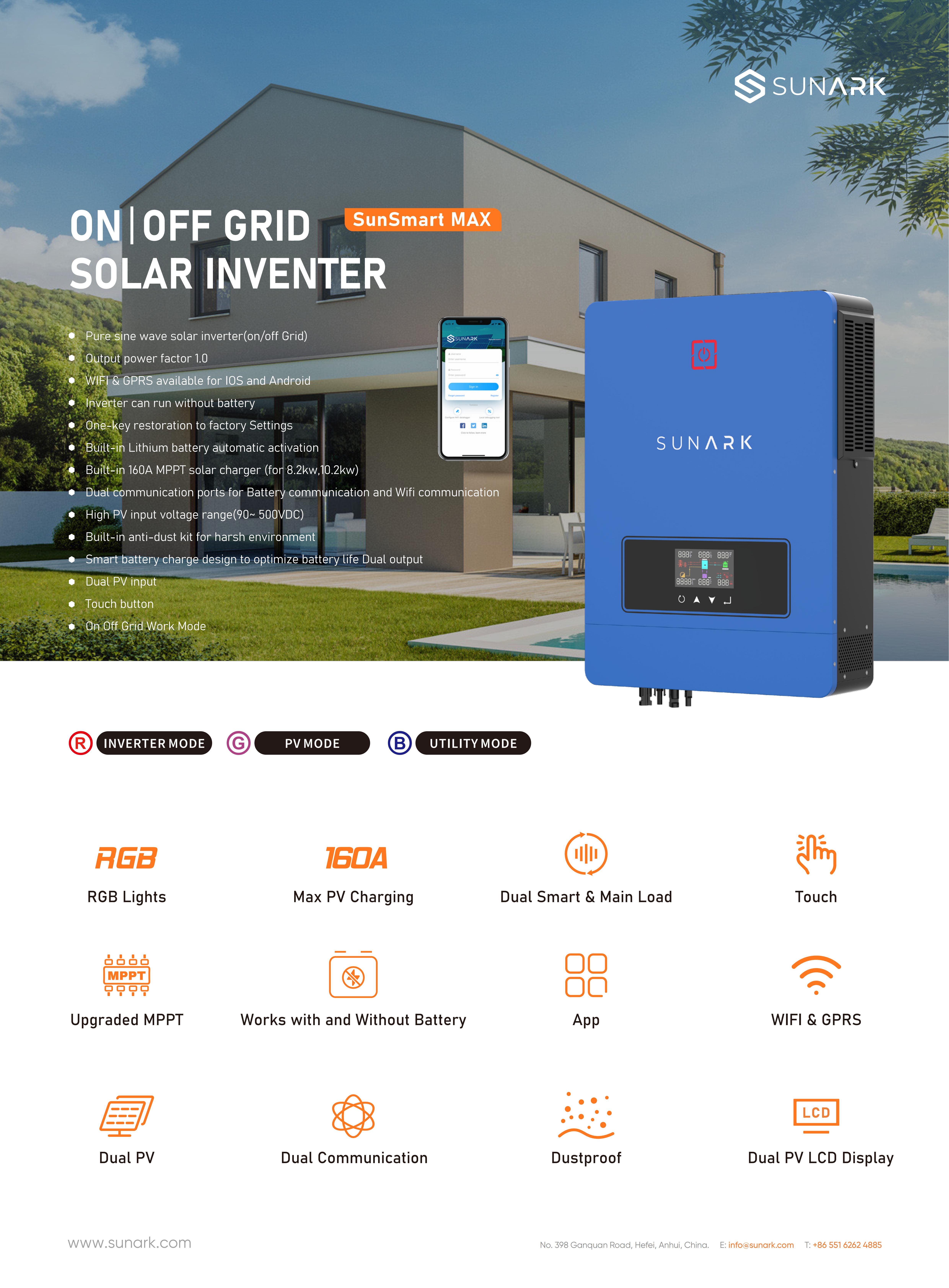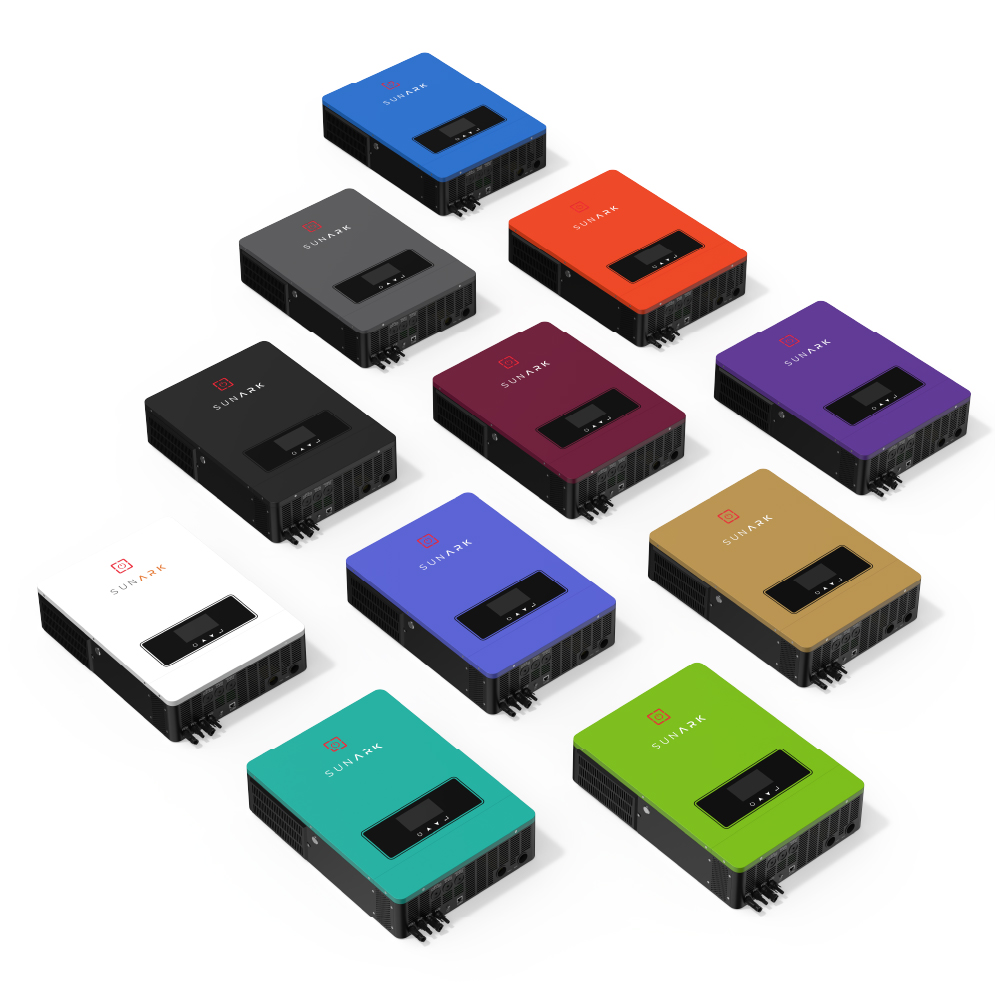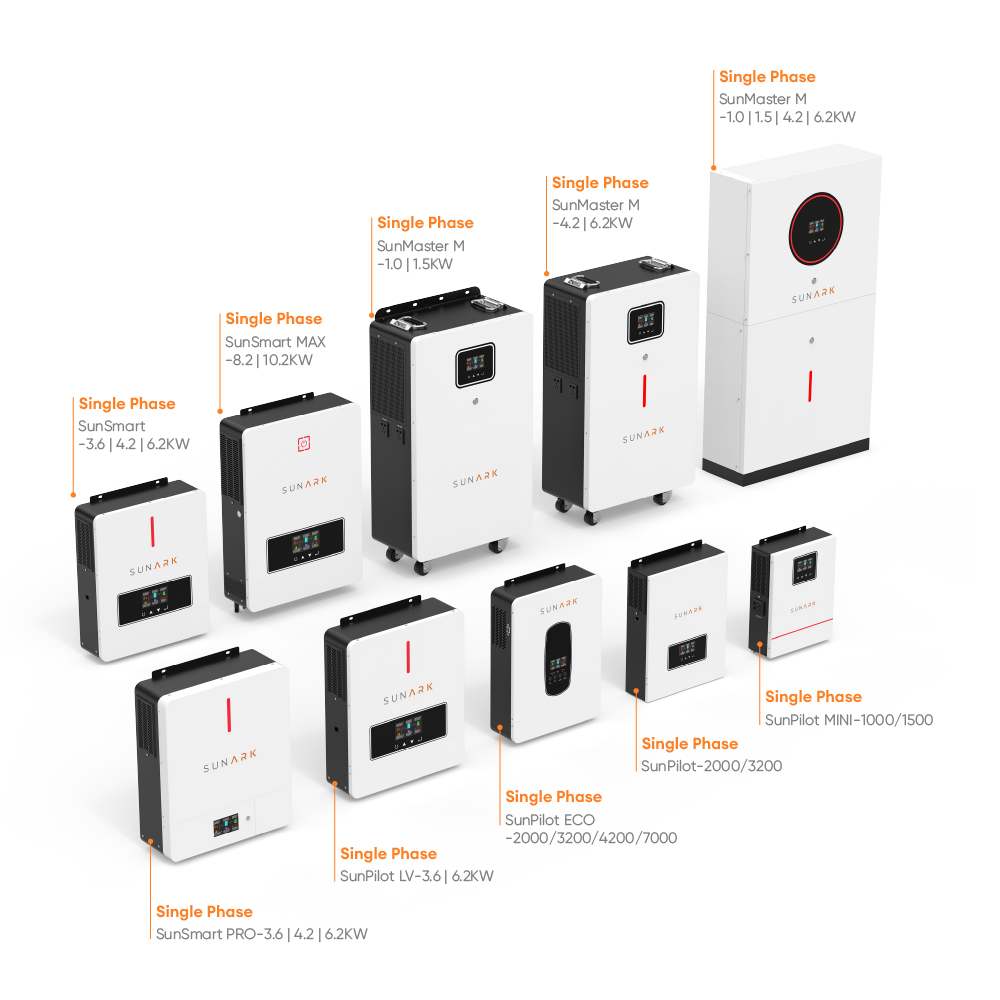Integrando pannelli solari, batterie e funzionalità di interazione con la rete in un unico dispositivo, l'inverter solare ibrido SunArk fornisce una soluzione completa per la gestione e l'ottimizzazione dell'uso dell'energia solare in un sistema di energia solare
marca:
SunArk:
SunArk SunSmart MAX-8.2KW / SunSmart MAX-10.2KW 10200W 30~400VDC 10200W 230VAC±5%La scheda tecnica della serie SunArk SunSmart MAX 10200VA è riportata di seguito:



Un inverter solare ibrido è un componente chiave di un sistema di energia solare ibrido. È responsabile della gestione del flusso di elettricità tra i pannelli solari, le batterie e la rete elettrica, ottimizzando l’utilizzo dell’energia e garantendo un’alimentazione elettrica affidabile. Ecco una descrizione di come funziona un inverter ibrido in un sistema solare:
1. Conversione dell'energia solare: l'inverter ibrido riceve l'elettricità CC generata dai pannelli solari. Converte questa elettricità CC in elettricità CA, che è la forma standard di elettricità utilizzata nella maggior parte delle famiglie e degli edifici.
2. Interazione con la rete: l'inverter ibrido monitora la domanda di energia nell'edificio e determina se utilizzare l'energia solare, l'energia della rete o una combinazione di entrambe per soddisfare la domanda. Se è disponibile energia solare in eccesso, questa può essere reimmessa nella rete elettrica per ottenere crediti o per compensare il futuro consumo di elettricità.
3. Ricarica della batteria: in un sistema solare ibrido, l'eventuale energia solare in eccesso che non viene immediatamente consumata può essere immagazzinata nelle batterie per un uso successivo. L'inverter ibrido controlla il processo di ricarica delle batterie, regolando il flusso di elettricità dai pannelli solari alle batterie. Garantisce che le batterie vengano caricate in modo efficiente e previene la carica eccessiva o insufficiente, che può danneggiare le batterie.
4. Scaricamento della batteria: quando c'è richiesta di elettricità ma i pannelli solari non producono energia sufficiente (ad esempio durante la notte o nelle giornate nuvolose), l'inverter ibrido preleva elettricità dalle batterie. Converte la corrente continua immagazzinata nelle batterie in corrente alternata e la fornisce all'impianto elettrico dell'edificio.
5. Gestione energetica: l'inverter ibrido ottimizza l'utilizzo dell'energia e dà priorità all'utilizzo dell'energia solare e dell'energia immagazzinata. Monitora continuamente la quantità di energia solare generata, il livello di carica della batteria e il consumo di elettricità nell'edificio. Analizzando questi fattori, determina la combinazione più efficiente di energia solare, energia a batteria e energia di rete per ridurre al minimo la dipendenza dall’elettricità di rete e massimizzare l’autoconsumo di energia rinnovabile.
6. Monitoring and Control: Hybrid inverters often come with monitoring and control features that allow users to monitor the performance of the solar system, battery status, and energy production and consumption. This information can be accessed through a display panel on the inverter or through a smartphone app or online platform. Users can also adjust the settings of the inverter, such as the charging and discharging parameters, remotely.
Overall, the hybrid solar inverter acts as the brain of the hybrid solar system, regulating the flow of electricity and optimizing energy usage to ensure a reliable and efficient power supply. It enables seamless integration of solar power, battery storage, and grid electricity, offering increased energy independence, reduced reliance on the grid, and potential cost savings

A hybrid solar inverter is a crucial component of a solar power system that incorporates both solar panels and energy storage, typically in the form of batteries. Its primary function is to manage the flow of electricity between the solar panels, batteries, and the electrical grid. Here's a step-by-step explanation of how a hybrid solar inverter works in a solar system:
Solar Power Generation: The solar panels generate DC (direct current) electricity from sunlight. This DC electricity is then sent to the hybrid solar inverter.
1. Conversion to AC: The hybrid inverter converts the DC electricity from the solar panels into AC (alternating current) electricity, which is the standard form of electricity used in homes and buildings.
2. Power Consumption: The inverter directs the AC electricity to power the electrical appliances and devices in the premises, enabling you to use the solar-generated electricity directly.
3. Excess Power: If the solar power generated exceeds the immediate power consumption, the excess electricity can be used in two ways:
a. Battery Charging: The hybrid inverter charges the connected batteries with the excess electricity. It converts the excess DC electricity into the appropriate charging current for the batteries.
b. Grid Export: If the batteries are fully charged, the excess AC electricity can be exported back to the electrical grid. In many regions, this allows you to earn credits or receive compensation for the electricity fed back into the grid through net metering or feed-in tariffs.
4. Grid Interaction: If the solar power generation is insufficient to meet the demand, the hybrid inverter automatically draws additional power from the grid to supplement the shortfall.
5. Battery Discharging: When there is a power outage or during periods of high electricity demand, the hybrid inverter can supply power from the batteries. It converts the DC electricity stored in the batteries into AC electricity for use in the premises.
6. Gestione energetica: l'inverter ibrido ottimizza la gestione energetica dando priorità in modo intelligente all'uso dell'energia solare e dell'energia immagazzinata. Garantisce che l'elettricità solare venga utilizzata prima di prelevare energia dalle batterie o dalla rete.
7. Monitoraggio e controllo: gli inverter solari ibridi spesso dispongono di funzionalità di monitoraggio e controllo integrate. Consentono di monitorare le prestazioni del sistema, monitorare la produzione e il consumo di energia e regolare le impostazioni da remoto tramite app mobili o piattaforme online.
Nel complesso, un inverter solare ibrido svolge un ruolo fondamentale nel massimizzare l’utilizzo dell’energia solare, gestire l’accumulo di energia e garantire una transizione graduale tra le fonti di energia solare, batteria e rete in un sistema solare.